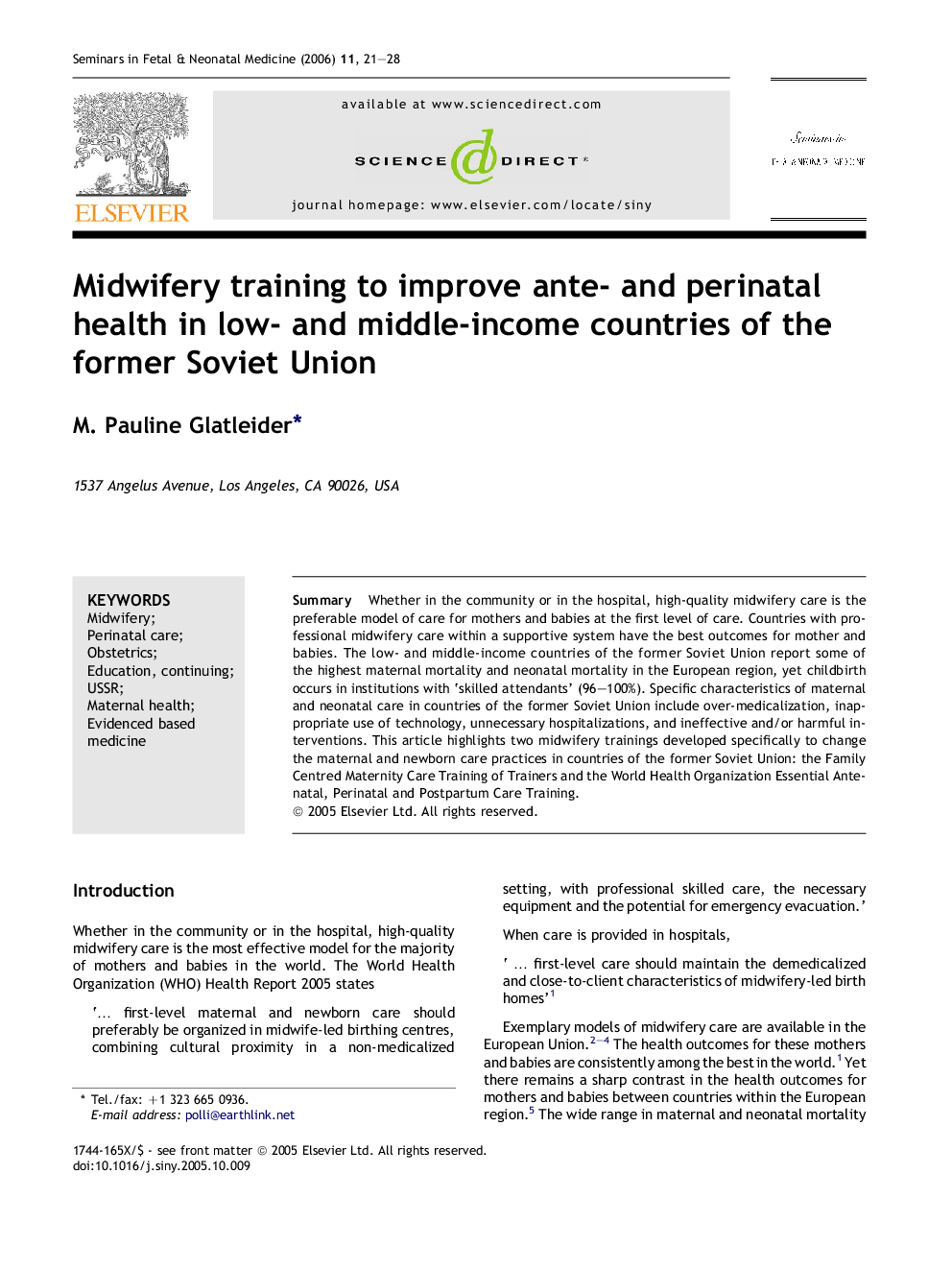| Article ID | Journal | Published Year | Pages | File Type |
|---|---|---|---|---|
| 3974607 | Seminars in Fetal and Neonatal Medicine | 2006 | 8 Pages |
SummaryWhether in the community or in the hospital, high-quality midwifery care is the preferable model of care for mothers and babies at the first level of care. Countries with professional midwifery care within a supportive system have the best outcomes for mother and babies. The low- and middle-income countries of the former Soviet Union report some of the highest maternal mortality and neonatal mortality in the European region, yet childbirth occurs in institutions with ‘skilled attendants’ (96–100%). Specific characteristics of maternal and neonatal care in countries of the former Soviet Union include over-medicalization, inappropriate use of technology, unnecessary hospitalizations, and ineffective and/or harmful interventions. This article highlights two midwifery trainings developed specifically to change the maternal and newborn care practices in countries of the former Soviet Union: the Family Centred Maternity Care Training of Trainers and the World Health Organization Essential Antenatal, Perinatal and Postpartum Care Training.
